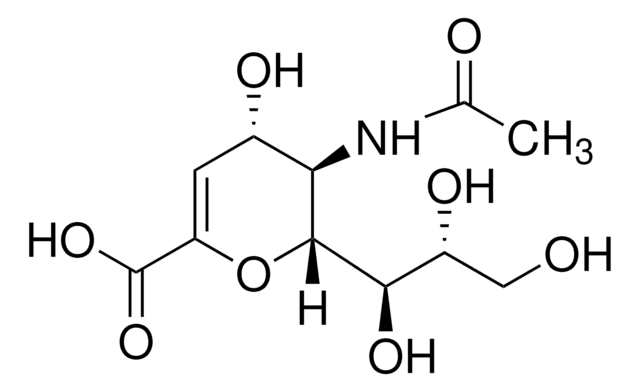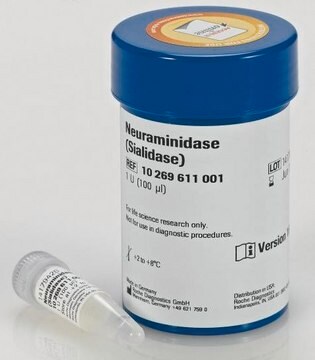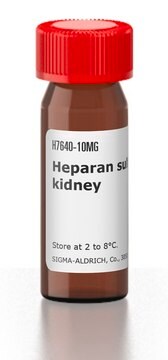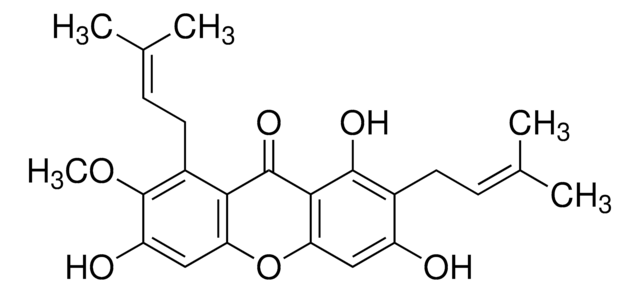A3765
N-(p-Aminophenyl)oxamic acid–Agarose
saline suspension
Sign Into View Organizational & Contract Pricing
All Photos(1)
About This Item
Recommended Products
form
saline suspension
Quality Level
matrix
cross-linked 4% beaded agarose
matrix activation
cyanogen bromide
matrix attachment
amino
matrix spacer
20 atoms
capacity
≥37 units/mL binding capacity (neuraminidase (N2876, 4MU-NANA substrate))
storage temp.
2-8°C
SMILES string
[X]Nc1ccc(cc1)NC(=O)C(=O)O
Application
N-(p-Aminophenyl)oxamic acid agarose is used in affinity chromatography, protein chromatography and in specialty resins. N-(p-Aminophenyl)oxamic acid has been used in studies characterizing sialidase, neuraminidase, β-N-acetylhexosaminidases and β-galactosidase.
Physical form
Suspension in 0.1 M NaCl containing preservative
Storage Class Code
10 - Combustible liquids
WGK
WGK 3
Flash Point(F)
Not applicable
Flash Point(C)
Not applicable
Personal Protective Equipment
dust mask type N95 (US), Eyeshields, Gloves
Choose from one of the most recent versions:
Already Own This Product?
Find documentation for the products that you have recently purchased in the Document Library.
T Kiyohara et al.
Journal of biochemistry, 80(1), 9-17 (1976-07-01)
Three beta-N-acetylhexosaminidases [EC 3.2.1.52] and one beta-galactosidase [EC 3.2.1.23] were purified from the culture filtrate of streptococcus 6646 group K by a combination of column chromatographies on p-aminophenyl beta-D-thiogalactopyranoside-substituted Sepharose and N-(paminophenyl)oxamic acid-substituted Sepharose. These beta-N-acetylhexosaminidases showed optimal activities between
X G Chen et al.
European journal of biochemistry, 221(2), 655-664 (1994-04-15)
Sialidase activities of rabbit blood cells and serum were measured. The leucocyte particulate fraction showed the highest specific activity of sialidase towards mixed gangliosides and sialyllactose, and the cytosolic fraction showed for fetuin. Predominant sialidase activity in the blood was
A Varki et al.
The Journal of biological chemistry, 258(20), 12465-12471 (1983-10-25)
The naturally occurring sialic acids can have different types of N- and O-substitutions, resulting in more than 20 known isomers and compounds. Most methods for the detailed study of these various sialic acids require that the molecules be first released
Our team of scientists has experience in all areas of research including Life Science, Material Science, Chemical Synthesis, Chromatography, Analytical and many others.
Contact Technical Service








